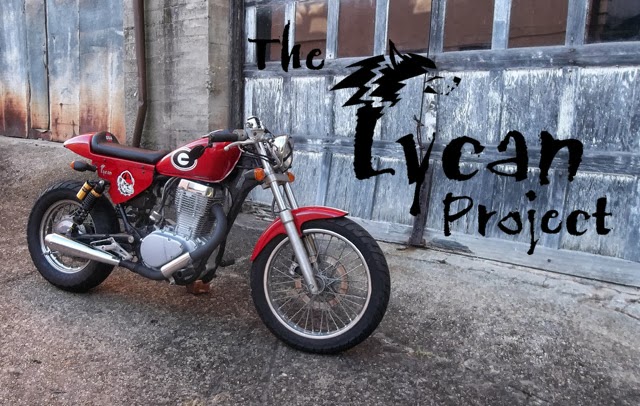Mounted on the Special.
A friend suggested I build some extensions for the lift in the lowered position.
The ramps allow me to ride the bike onto the lift and back it off the same way.
I have a video but nobody wants to see my butt for that long. I cut a slot in the left hand addition to allow for the pedals. Once the bike is secured I simply use the handles to lift one end and slide them out of the way. Stacked they make a nice height little bench.
The wheel chock on the Harbor Freight lift is less than satisfactory. I replaced it with this model also available from HF. I also added two eye bolts to the end to allow for an additional point to secure a bike. As far as my opinion of the HF lift goes for the home user or hobbyist it is the way to go. The choc is not very good but affordable and easy to upgrade. The deck is not as sturdy as I would like and there is some flexing when you are raising the bike but once raised this is not noticeable. The raised lip on the deck is a nice feature as you don't have to worry about tools and parts falling off while you work. It also serves as a great adjustable height work table for other projects. The choc is easily removable with 4 bolts. With the choc removed the lift is low profile enough to leave in place and simply drive most cars over in your home garage, not some sports cars or cars with low profile tires though. I have a friend that bought a shop grade air lift that is much more heavily built but with shipping cost 4 times what I paid for the HF lift at my local store. For the money it is hard to beat. I have a repair coming up on the RT that I could not do without the lift. This one job will pay for the lift 2 times over. Not to mention the peace of mind knowing
what was done and how it was done.
I needed a jack so my solution was a WalMart 1.5 ton scissor jack. $29.00 at the local store. I added an aluminium plate to the top with two bolts. I will use a small 1X6 on top for the RT so the screw heads will not place undue stress on the case.
A $25 gift certificate to Lowes prompted me to organize my tool box. This system has 1/4", 3/8", and 1/2 inch studs to store the sockets. There is a foldable handle that allows me to lift the whole group out.
Pliers.
Wrenches. Pretty professional, HUH?
Another item I have worked on over the holidays is a controller for my heated jacket. Most controllers are $80 and up. I tried a rheostat configuration from parts I bought at Radio Shack. It smoked out pretty quick. I read on one of the forums about a DC motor controller on ebay. This unit came with the case and was listed as a
"DC motor speed control, 30 amp, 9-28 volt, Max 800w." Price shipped from China, $23.99! I also ordered a First Gear coax extension from Amazon for $11. I also added an LED from Radio Shack to allow me to see if it is on. Works really great. Only drawback is that it is not water proof.
In an earlier post I mentioned adding heated grips to the RT. One of my Christmas presents was a pair of Lee Parks PCI Deer Tour gloves. The deer hide is super soft and literally fits like a glove. The pci option has a space age liner that picks up the heat from the grips and spreads it around your hands. This seems to work great. On a recent 33 degree ride my hands were toasty warm. The PCI material called "phase change" is supposed to work in warm weather as well, dissipating the heat from your hands. This supposedly gives you a range from 40 to 70 degrees where these gloves are comfortable. The low end can be extended even further with heated grips. At $140 their not cheap but the quality is without question and they can extend beyond the motorcycle as they're not bulky and look like a pair of nice leather dress gloves. There is also a repair option if they are ever damaged but the deer skin has a higher abrasion rating than cowhide. I first heard about these on The Pace Motorcycle Podcast. One of the guys there said he used these in the winter time and the regular unlined version ($89) the rest of the year. I may have to invest in a pair of these as well. These things get two thumbs up from me for winter riding.















